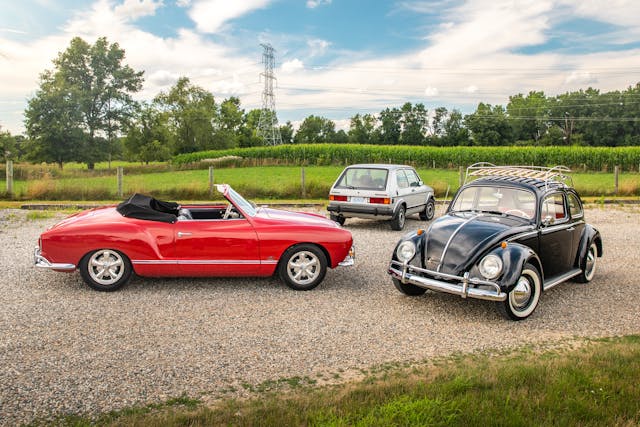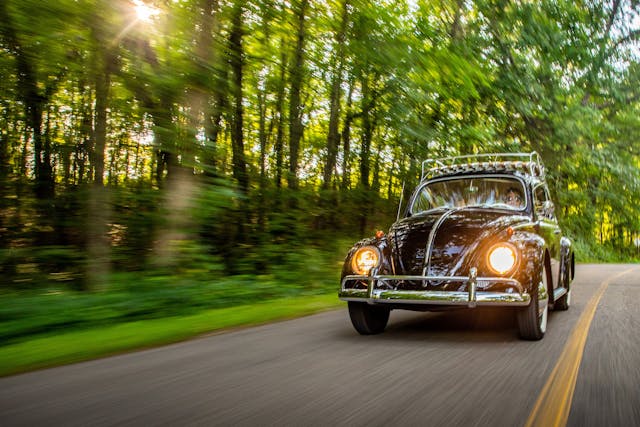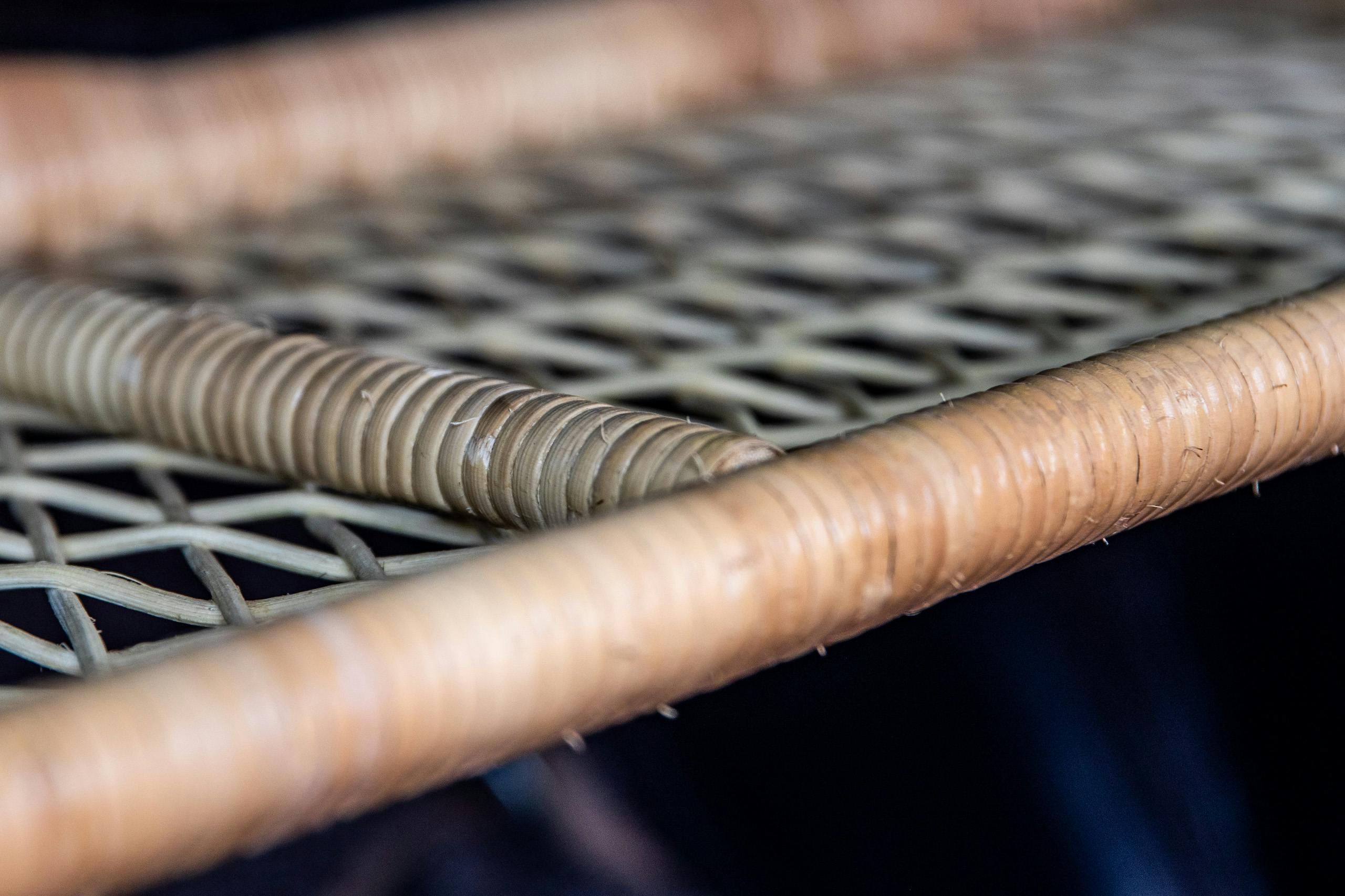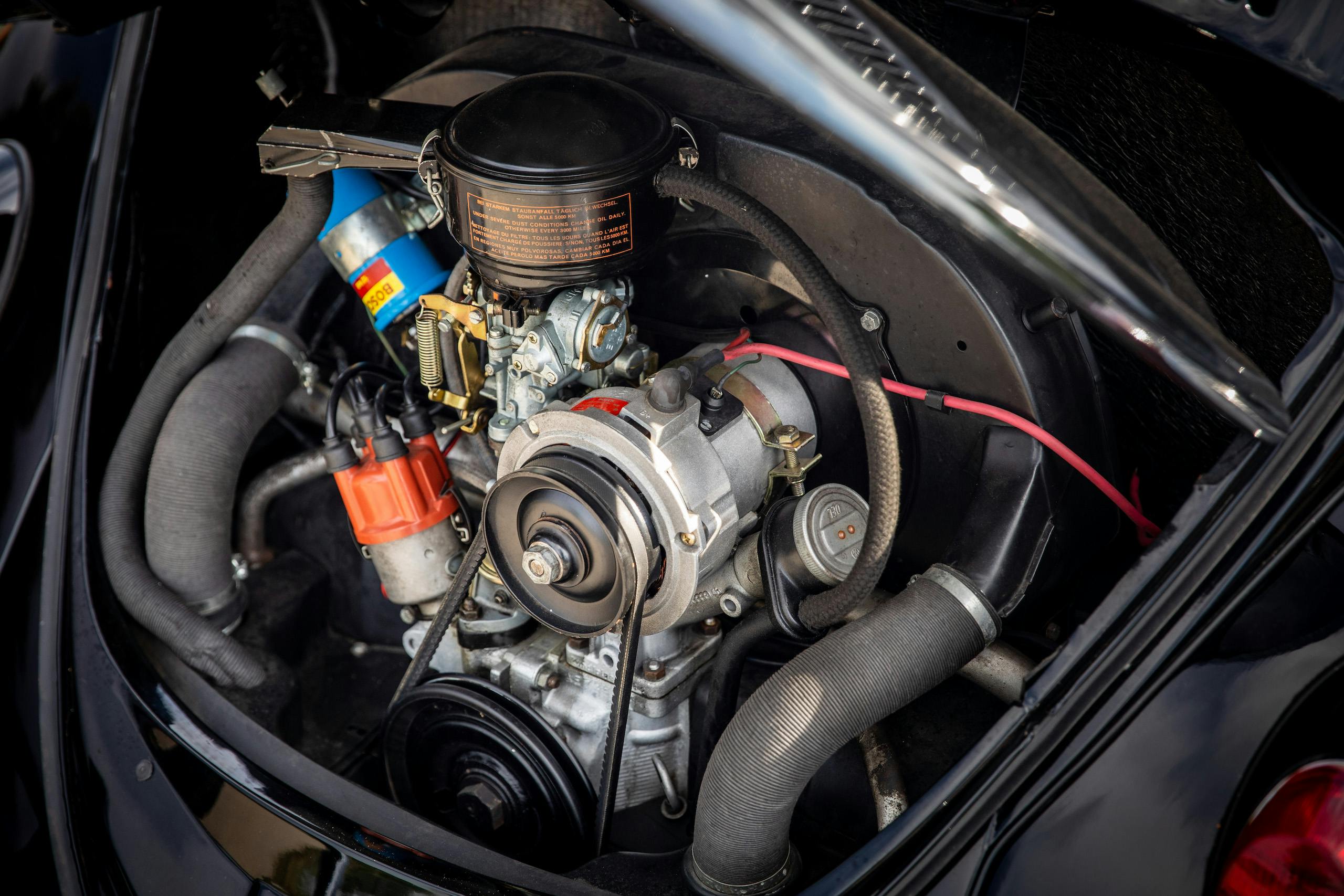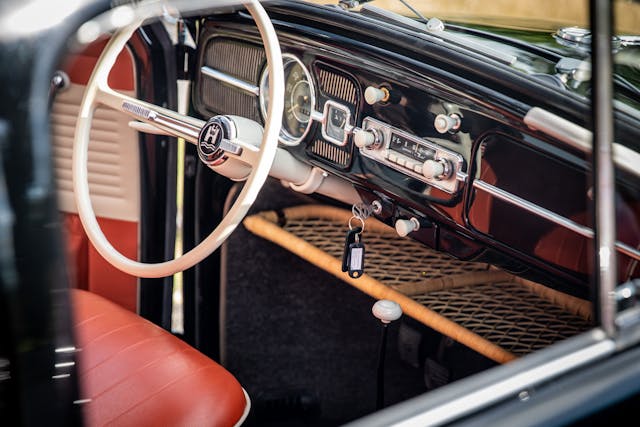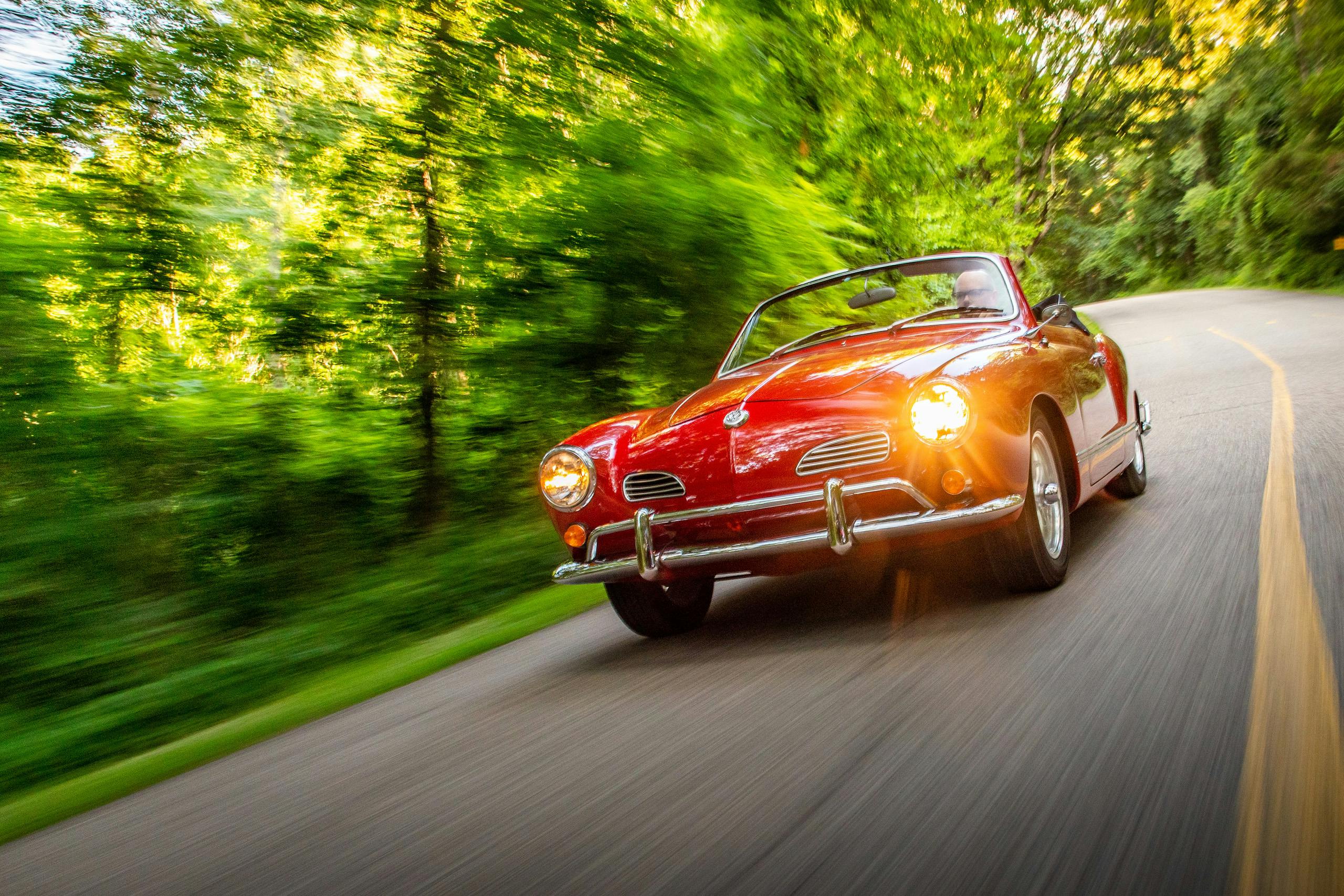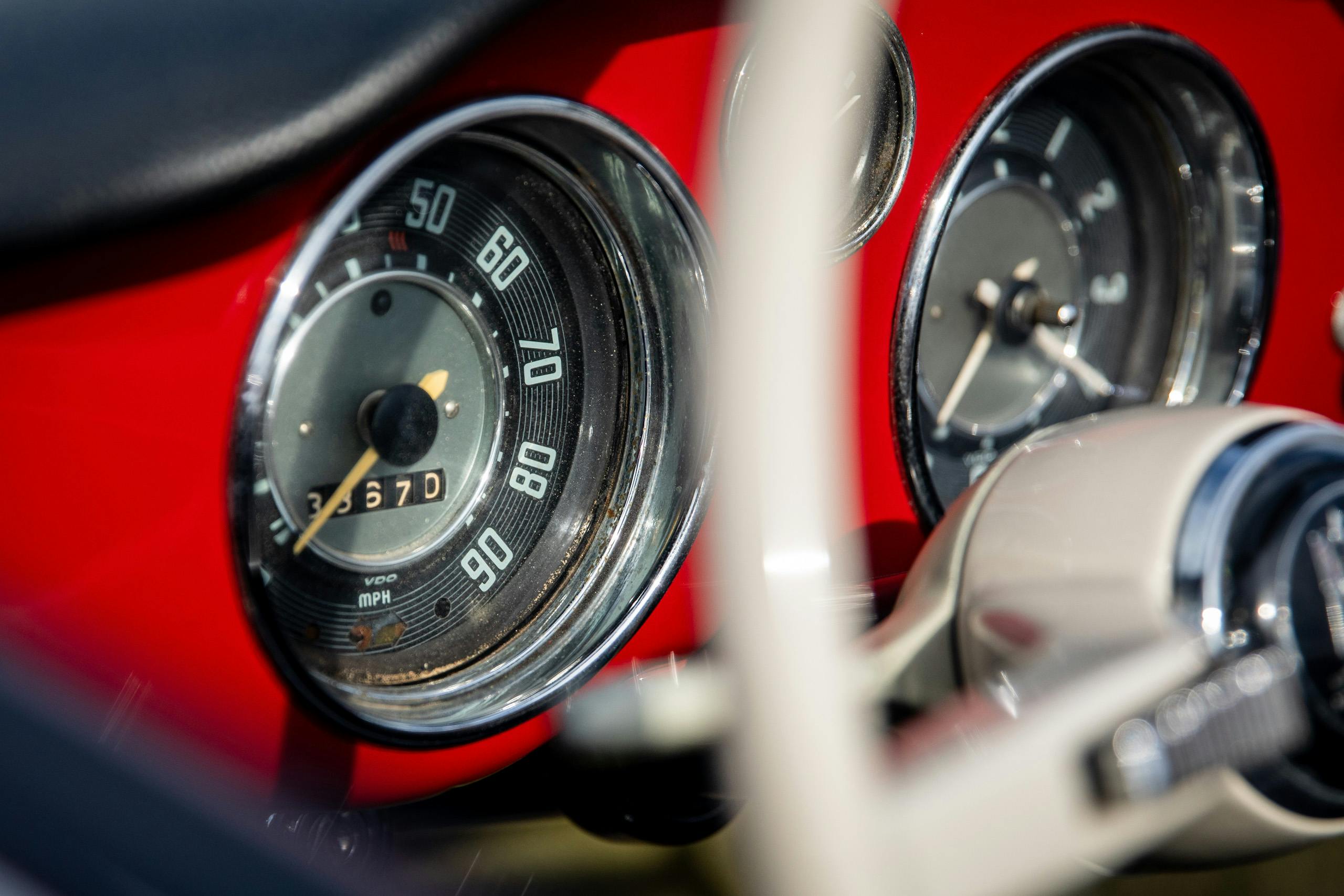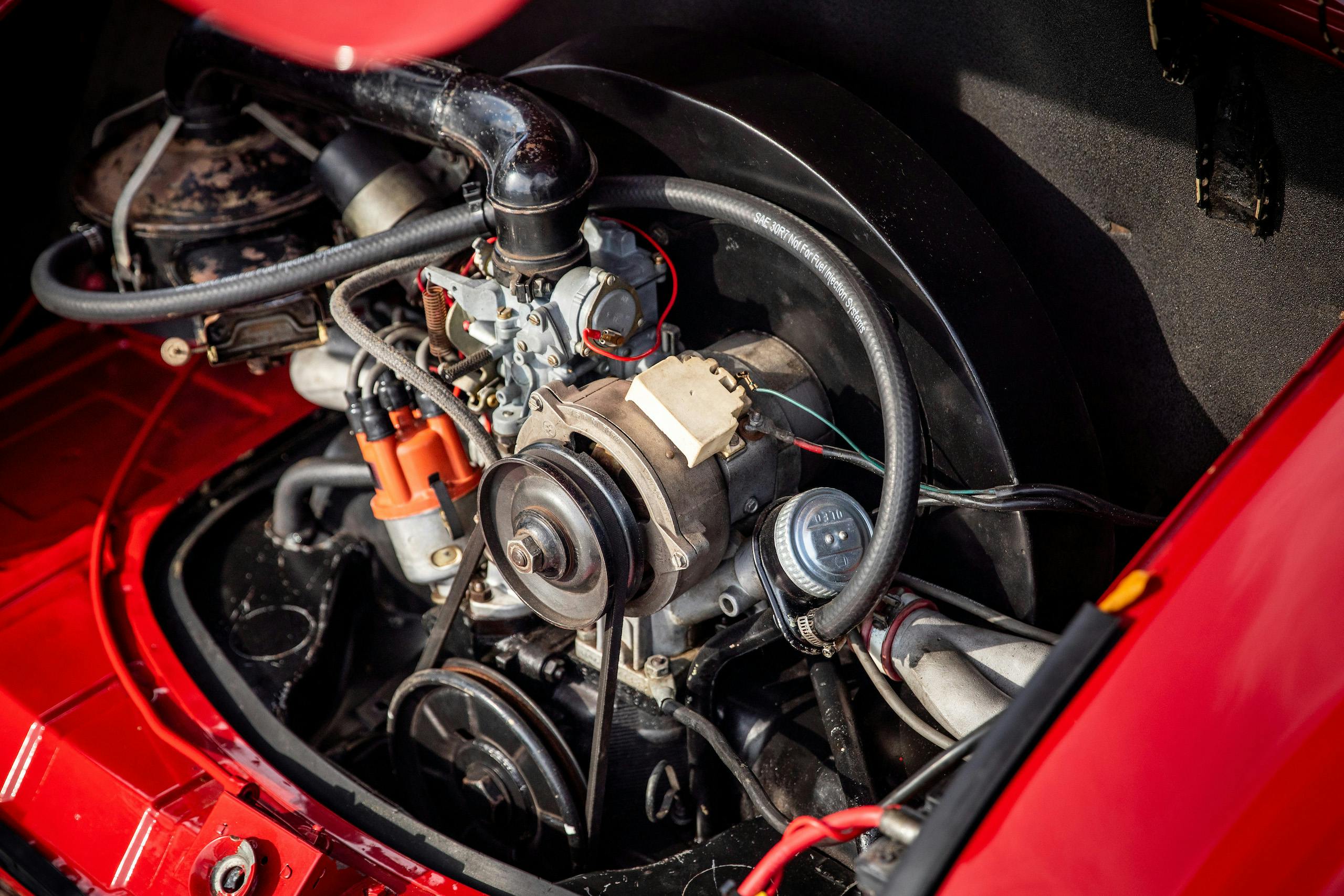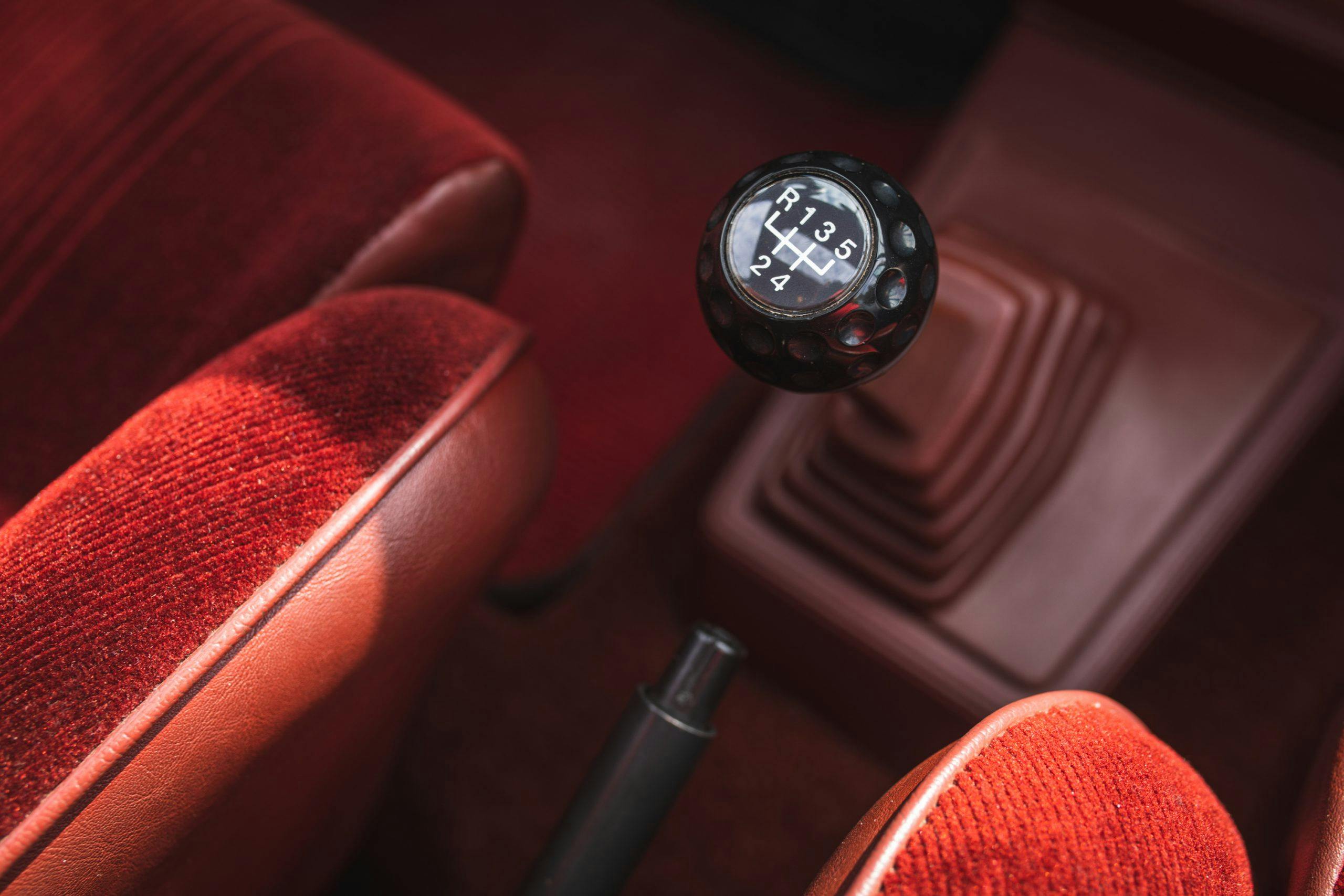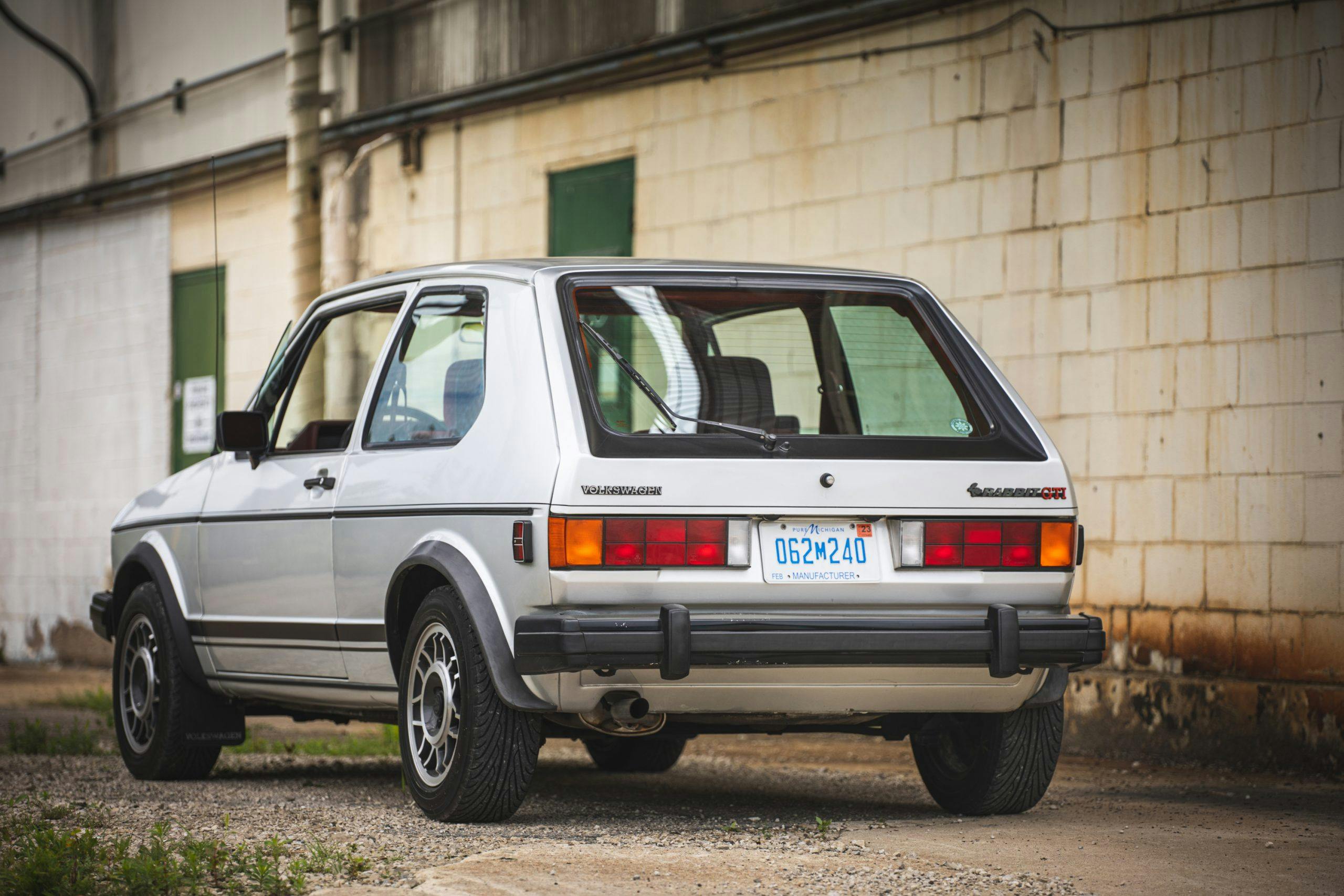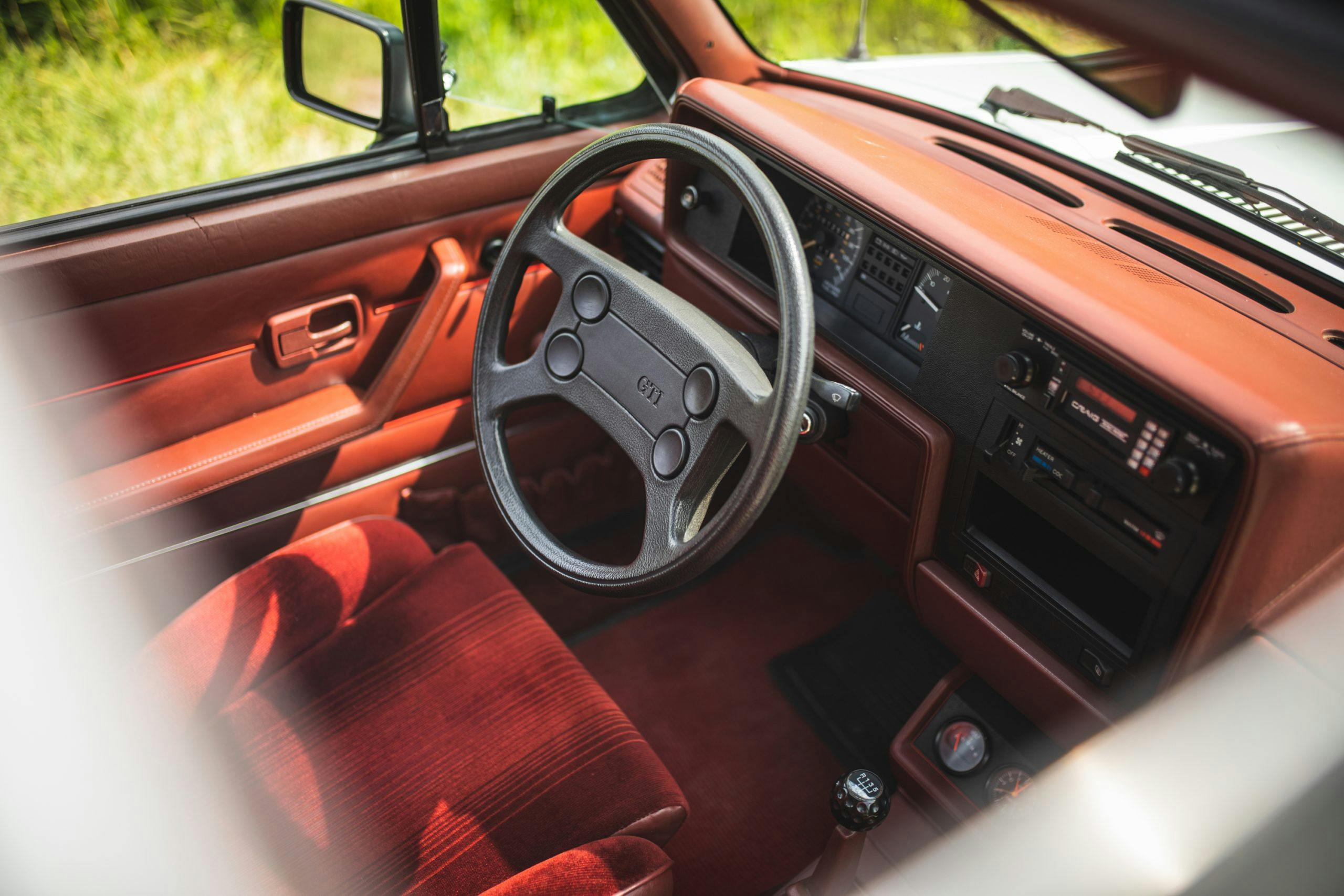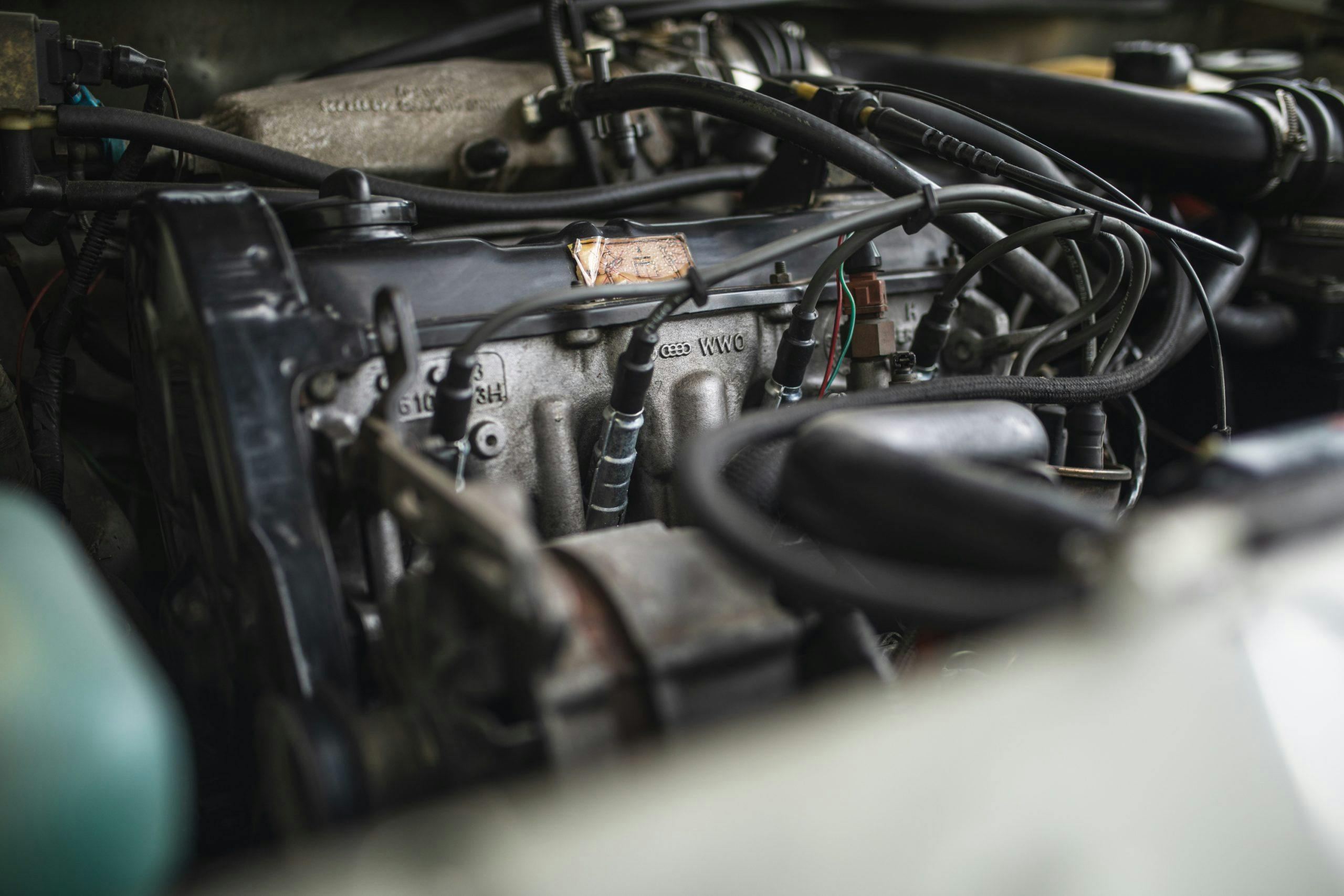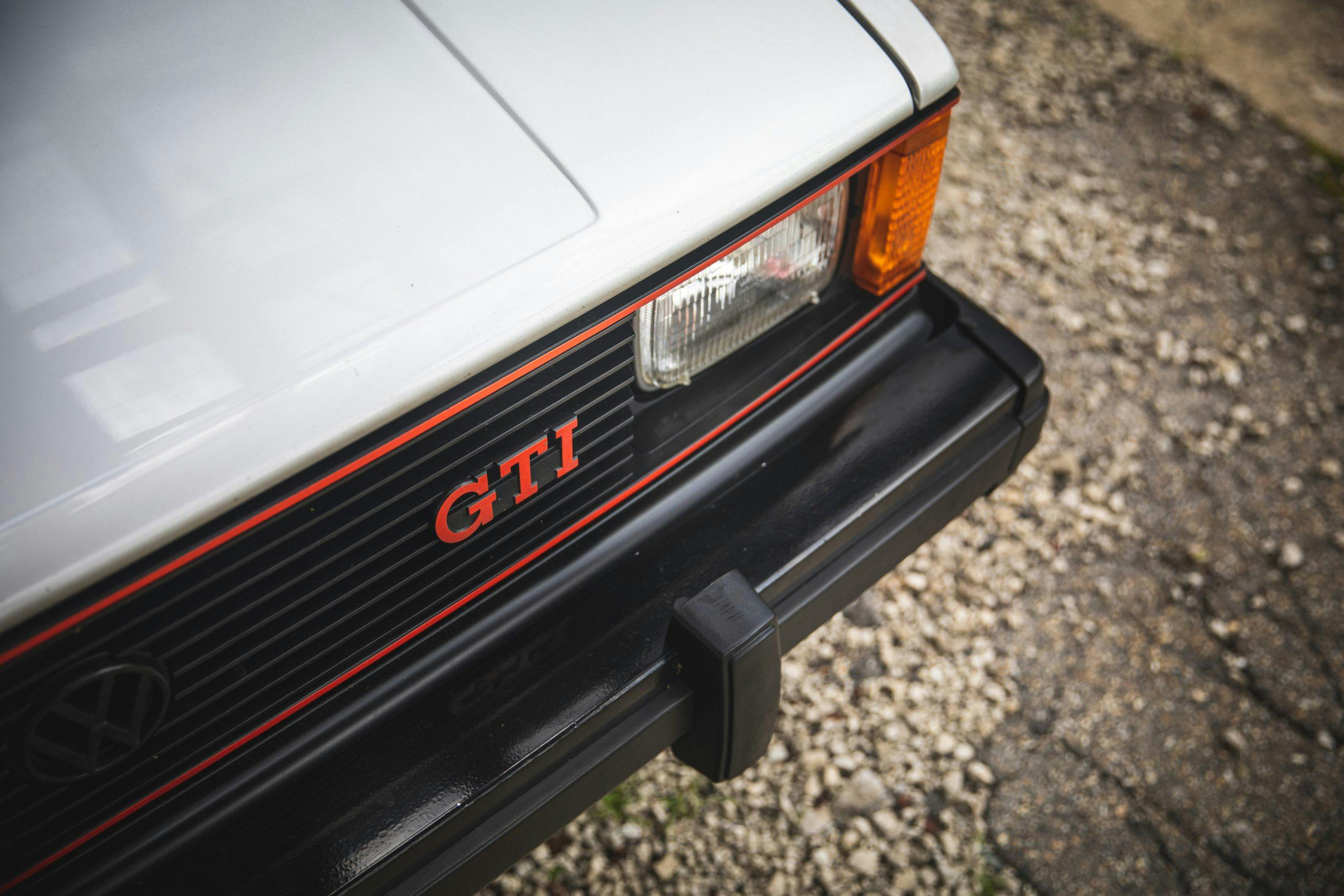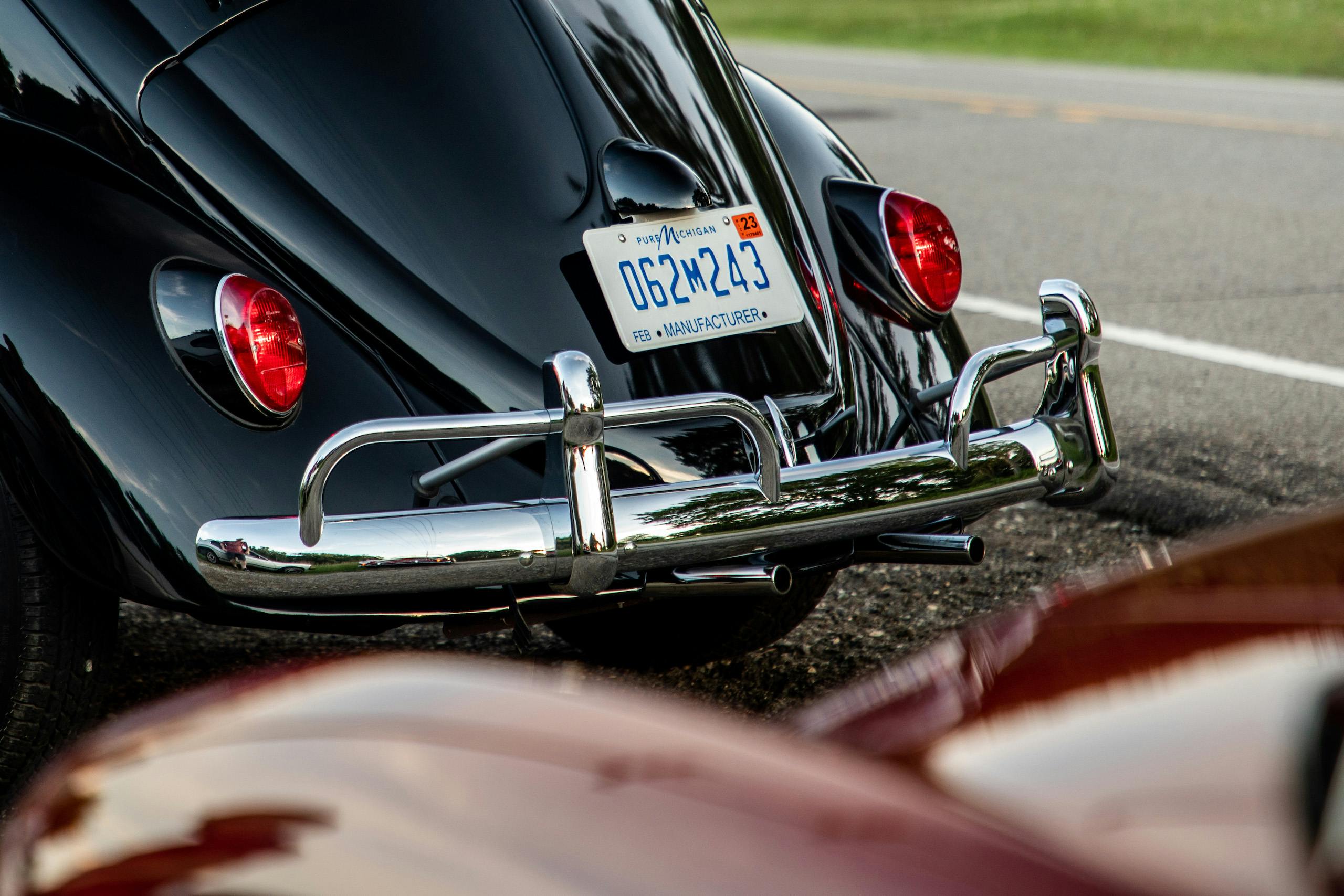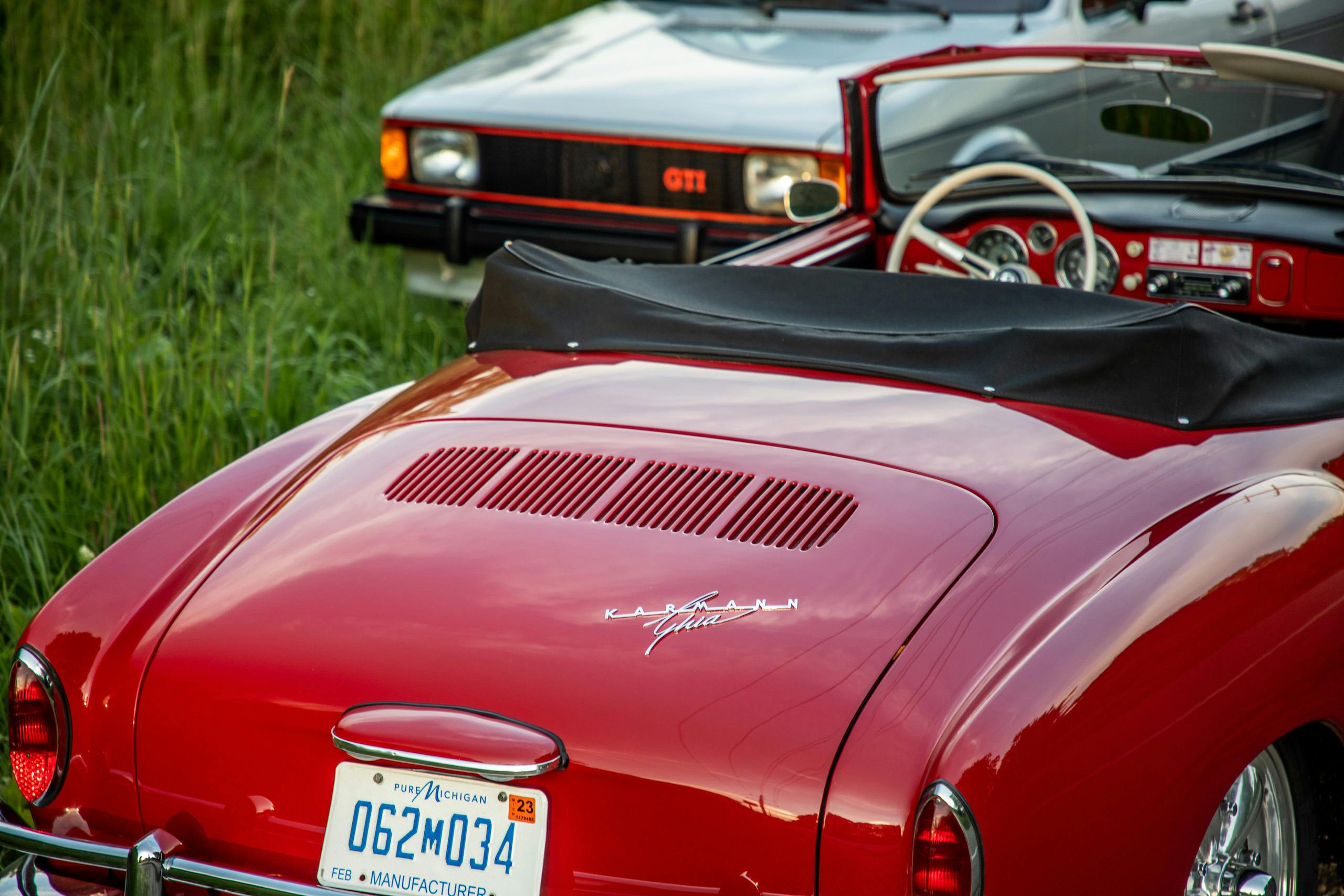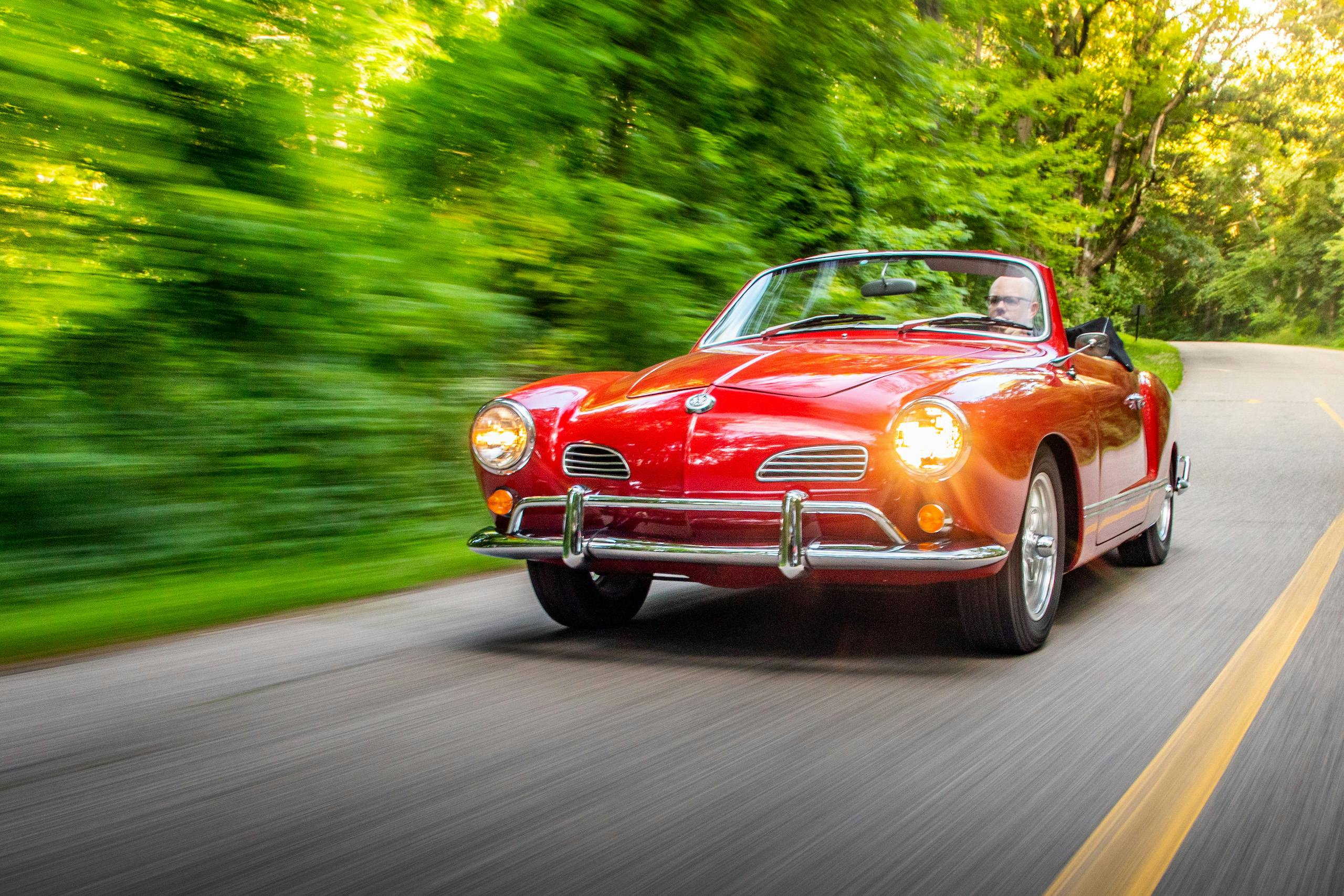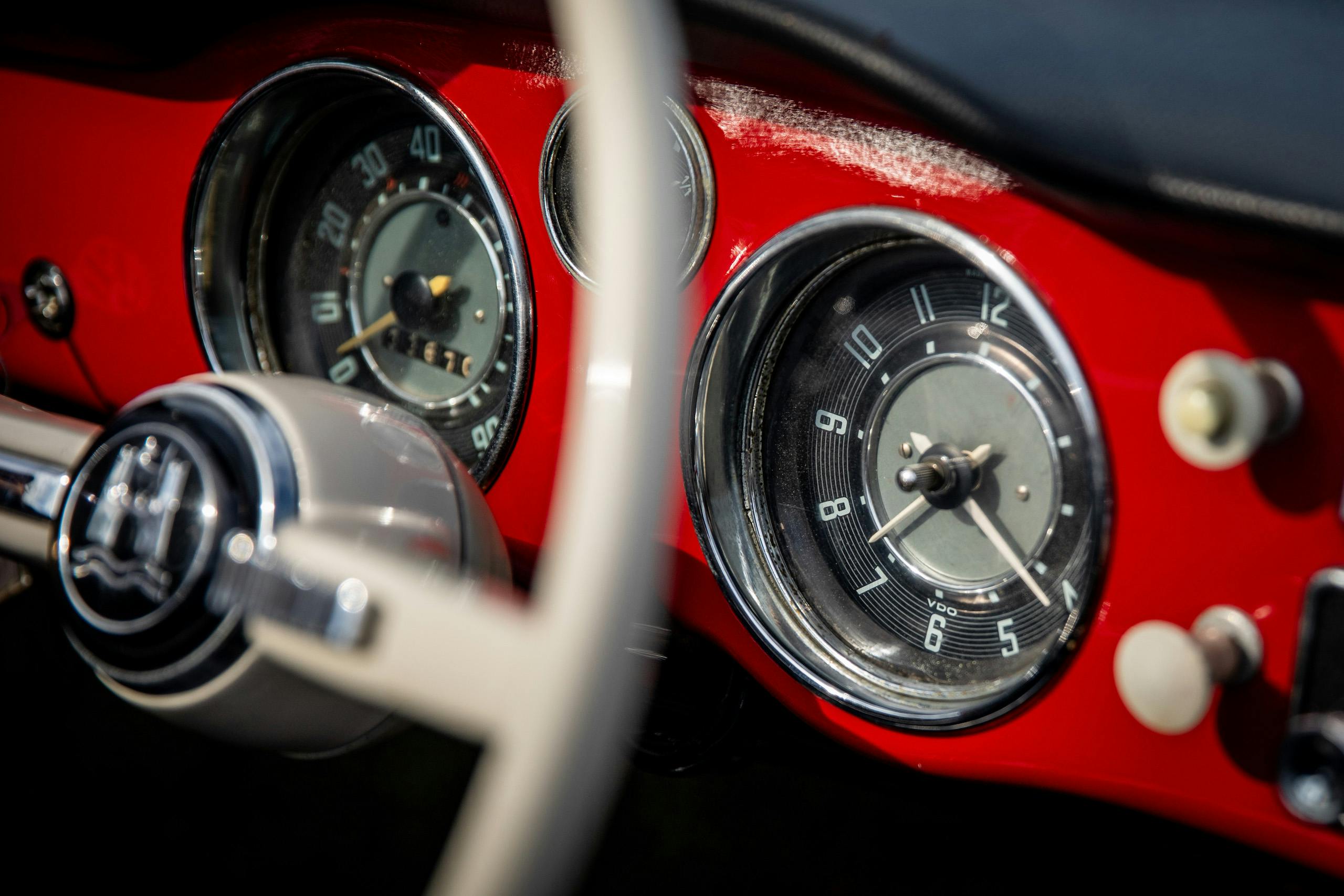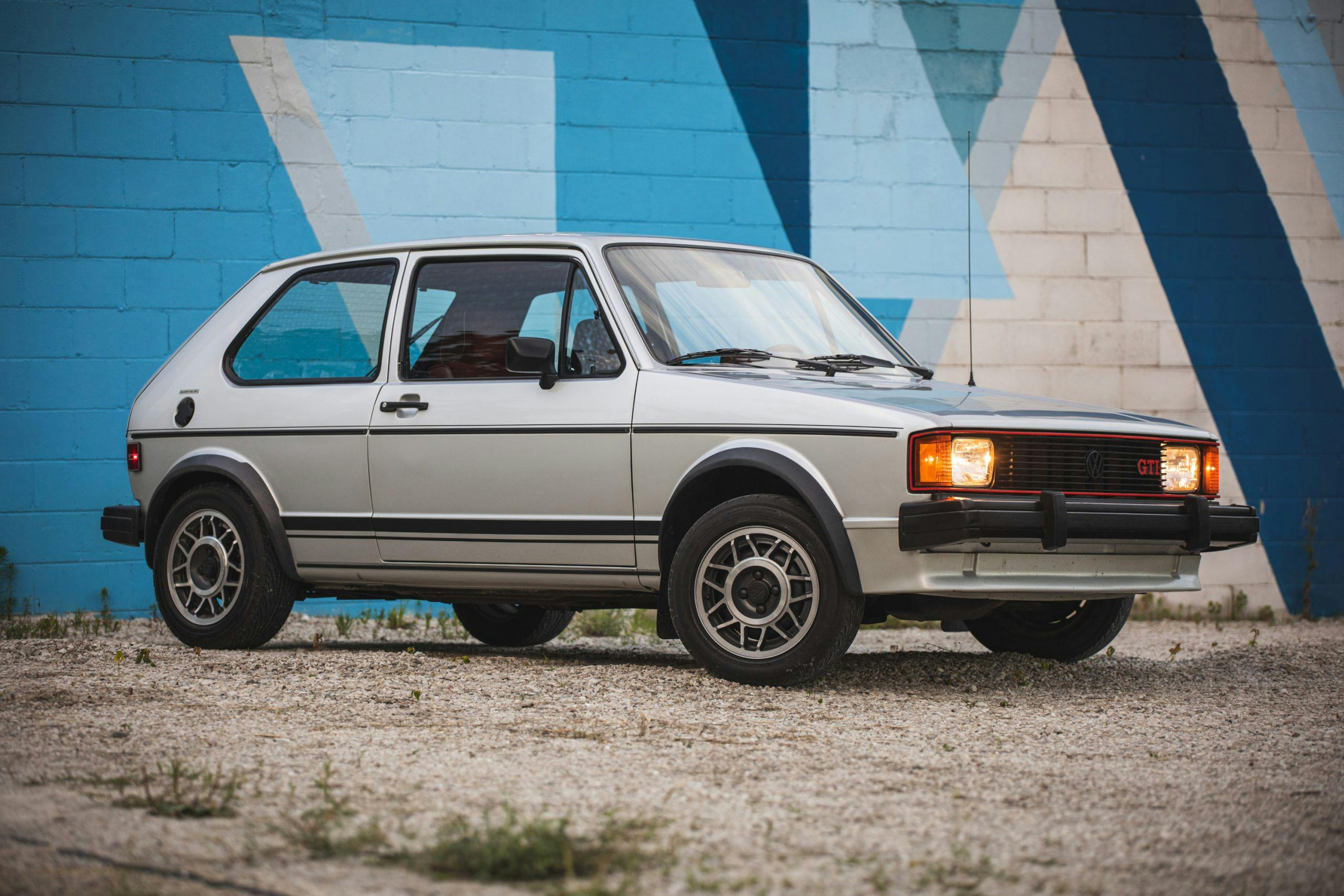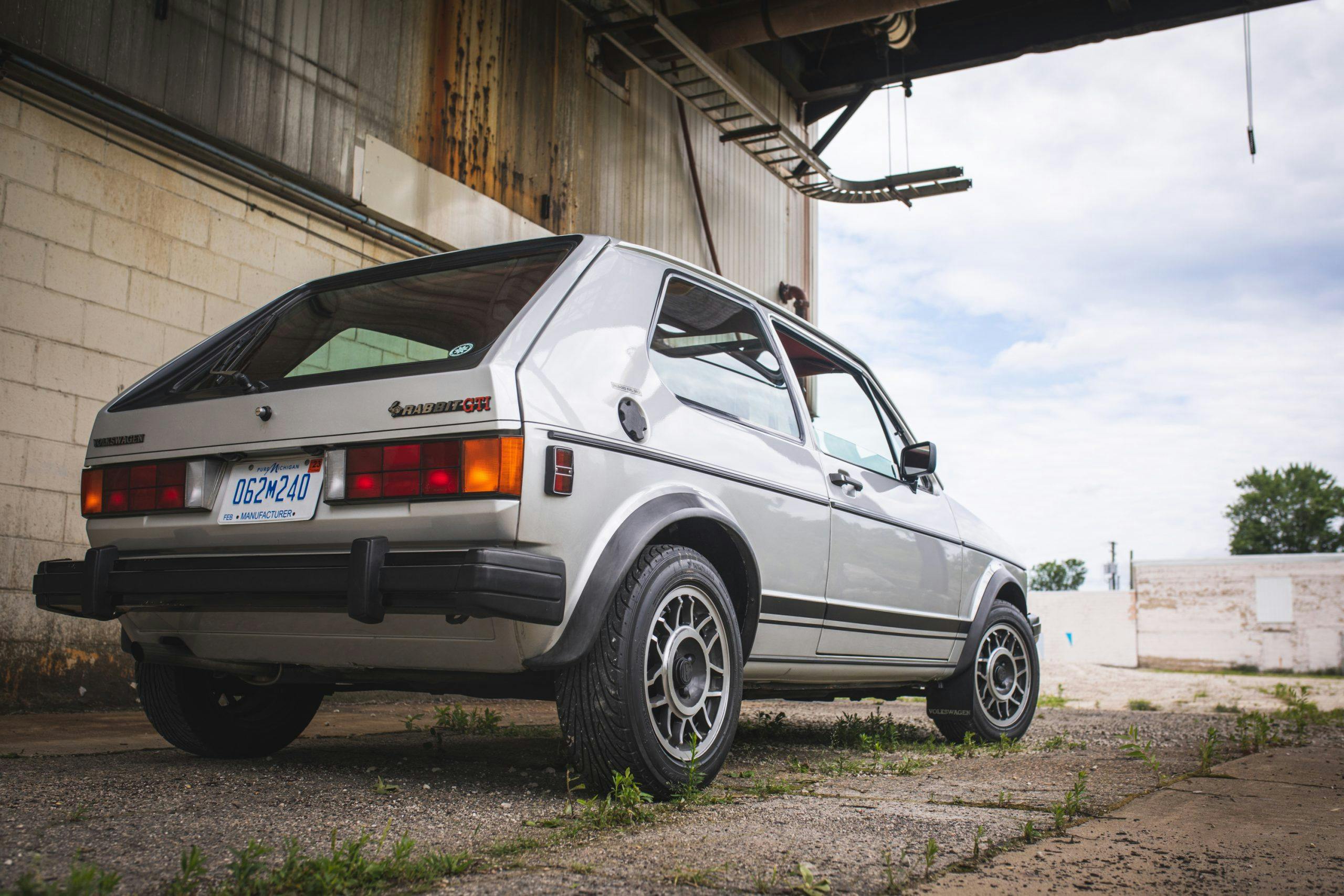Media | Articles
3 Volkswagen time travelers find econo heaven
Earlier this summer, Volkswagen of America offered media loans of vintage vehicles from its historic collection. We gathered three of them—a Beetle, Karmann Ghia, and Rabbit GTI—for a well-spent July day motoring around southeast Michigan.
1964 Volkswagen Beetle Sedan
Walk into any bar in Philadelphia, ask for a “lager,” and without delay a frosty Yuengling will be served. Never mind that Budweiser, Miller, and Coors are all more popular lagers—in a region that honors Yuengling’s status as America’s oldest operating brewery, the shorthand says it all.
For decades, “Volkswagen” meant one thing: Beetle. Even with the Transporter, Squareback, and Thing on the market, the original Type 1 was the source from which all successors flowed. Not only is the Bug the first VW, but it’s perhaps the most ubiquitous and recognizable vehicle in the history of the automobile. The Vee-Dub’s simple rear-engine, rear-wheel-drive layout made it a highly affordable, fuel-efficient, and relatively spacious conveyance in just about every viable market on the globe. This car mobilized Europe following World War II, became an icon of 1960s culture in the U.S., and remained a fixture in Mexico City taxi fleets into the early 2000s. With more than 21.5 million units sold from 1938–2003, it is the second-best-selling model of all-time, behind only the Toyota Corolla.
For 1964, the Beetle arrived with a host of key updates: larger front turn signals, an optional metal sunroof, two buttons for the horn in place of the prior half-ring, and better-breathing basket-weave vinyl seats in place of solid vinyl. Out back remained VW’s familiar overhead-valve and air-cooled flat-four, displacing 1.2 liters and good for 40 hp and 65 lb-ft of torque. Those are unimpressive numbers on any modern spec sheet, but the Beetle’s 1675-pound curb weight meant the Bug didn’t need much grunt to get moving. Top speed was roughly 75 mph.
This particular car is one of five restored for use in a VW advertising campaign that began in 2008, featuring a black Beetle named Max. Serving as company spokesperson (spokescar?), Max interviewed several famous figures for the ads, including supermodel Heidi Klum and German pop culture sensation David Hasselhoff.
Marketplace
Buy and sell classics with confidence
The beauty of this vehicle is its absolute analog controls. Pump the gas a couple of times to empty the carburetor bowl, twist the key, and hear the kazoo-like starter fire the little engine into clattery action. Roll down the window. Push the tiny button and flip the little lever on the swiveling window to let in some extra fresh air. Release the parking brake, find first gear at the end of a surprisingly long throw of the tall shifter, and set off with the thin steering wheel resting delicately in your hands.
I know this drill well—my garage is home to a red ’67 Beetle sedan. Aside from the fact that my car has a different engine, a stock 12-volt electrical system, and several one-year-only trim bits, the main reason this Bug feels like such a treat is because it’s in far better shape than mine. Even still, this time-capsule VW is fundamentally the same familiar, low-stress affair. There is no point rushing the experience, because these cars are as endearing as they are slow. Savor it! Without a tachometer, you’ve got plenty of mental bandwidth to listen to the engine rev; use your ears and your lizard brain to determine the proper times to shift. The engine much prefers being revved out to being lugged, especially at low speed, so the trick is to patiently find the next gear, slowly letting out the clutch as the revs fall.
Once that’s all dialed in, just enjoy the ride. Relax. There isn’t much more to it, and that’s sort of the gist of the Beetle’s enduring appeal. People smile. They wave. More likely than not, the curvy body and round headlights trigger a Volkswagen memory that renders charmed onlookers able to practically smell the horsehair seat stuffing as you chug on by, towel-rack bumpers and twin pea-shooter exhaust pipes gleaming in the summer sun. — Eric Weiner
1963 Volkswagen Karmann Ghia Convertible
“A Beetle in an Italian suit … The rich cousin to the people’s car.” Since its release in 1955, Volkswagen’s Karmann Ghia has always been compared to the little Bug that put the German car company on the map. Rightfully so: the slinky Type 14 was designed by Italian firm Carrozzeria Ghia, fabricated by German coachbuilders at Karmann, and perched on Beetle running gear.
Ghia headman Luigi Segre was heavily influenced by American designer Virgil Exner, the man responsible for the Chrysler’s fabulous ’50s fins. Before he went fin wild, Exner and Ghia collabbed on the 1952 Chrysler D’Elegance showpiece. The concept car looks like a giant Karmann Ghia. When the production Type 14 eventually rolled out, Segre and his Italian design house didn’t deny the American influence. In fact, they sent Exner the first Karmann Ghia imported into the U.S., as a gift.
In 1957, two years after the coupe’s initial release, VW unveiled its Karmann Ghia convertible. Still a Beetle, sure, but now drivers could attain that wind-in-hair sports car feel at a people’s car price. In 1963, the same car we drove for this article would have only set you back $2500, compared to $1685 for the DeLuxe Sunroof Bug.
A Road & Track road test of the 1962 model concluded, “Casting all theory and speculation aside, the Karmann Ghia is still a Volkswagen, with all that the phrase implies. It will carry two people, and their luggage, in reasonable comfort at a reasonable speed, and with economy and reliability. Not much more could be asked of it.”
During our drive, for a photo op, we park the topless beauty in a roadside gravel lot. My eyes wandering from bumper to bumper, I think about how, over time, the Karman Ghia’s design has aged well, like any similarly red Italian. My grandfather and his buddies might have seen this as a gussied-up economy car, but I can’t help imagine that the appeal of an affordable sports car transcends generational gaps. A mid-century Miata, perhaps. The Ghia’s extended curves and low profile visually stretches the wheelbase. Since the air-cooled 40-horsepower Bug ticker is in the back, the nose is grille-less, apart from two whisker vents straddling a lovely crease that runs from the center of the nose to the back of the frunk.
Photography finished, I jump back in the Ghia. We roll over more sun-dappled back roads, the worker-bee exhaust emitting a reassuring hum. This is no Beetle. From my vantage point, leading the pack of three VWs, I see only long, red fenders. — Cameron Neveu
1984 Volkswagen Rabbit GTI
Unless you were around in those days, it’s difficult to comprehend. The ’70s and early ’80s were an automotive wasteland in this country, a vast and desolate landscape populated by automobiles of the terminally mediocre variety. The majority were produced by the Big Three automakers, each of which seemed completely unable to manufacture a car worth wanting, let alone deserving of teenage enthusiast desire.
In 1982, I was a senior in high school living in a small farming community some 24 miles southwest of Flint, Michigan. Dad—as did most of my uncles—worked at nearby General Motors. My daily driver was a hand-me-down 1976 Chevrolet Chevette with more than 120,000 miles on the clock. It had the Rally trim package, meaning the base model’s 52-hp 1.4-liter was upgraded to a 1.6 that, at its height, made 60 horsepower. Many of those horses, however, had long left the stable. There were sporty stripes on the sides, a four-speed manual, and a tachometer. The floorpans had been replaced with pop-rivetted sheetmetal. The gearshift knob regularly came off in your hand when shifting into third, allowing the steel shaft to gouge the heel of your right palm. My school’s parking lot was filled with such cars, the most exotic of which were a handful of early ’70s Camaros or Chevelles, jacked up and sporting Cragars.
That year, the U.S. Postal Service delivered a bomb to my mailbox: the November 1982 issue of Car and Driver. “New VW GTI!” it enthused. “Hot, hare-raising Volkswagen.” What the heck was a GTI? The answer was on page 61, and my heroes were raving. “Everything about this car is calculated to make an enthusiast salivate in anticipation,” wrote the car’s reviewer, Rich Ceppos. “This car just down-the-road drives better than any other box I’ve tried in the past year,” stated Patrick Bedard. Hagerty contributor Don Sherman, C/D’s technical director at the time, said, “…everybody loves the Rabbit GTI, including me.” The test results were extraordinary for such a car—0.78 g on the skidpad, braking from 70 mph to zero in 194 feet, and most amazing of all, a 0–60 time of 9.7 seconds. That was nearly a second faster than a 5.0-liter Pontiac Trans Am with a four-speed manual. When my cousin showed up in my driveway with a black GTI later that October—with a vanity plate that read “1DRBAR”—and took me for a spin, my tiny 17-year-old brain was officially blown.
Fast forward 38 years to today, a high-school reunion of sorts. A silver GTI has been delivered to my driveway, and I am instantly transported back to fall 1982. Slipping behind its simple four-spoke wheel and settling into the handsome red-corduroy-upholstered seat, I am reminded again of how incredibly simple and straightforward this car is. Gauges behind the wheel are limited to a speedometer, a tach, coolant temp, and fuel level, with volt readout, clock (quartz!), and an oil-temp gauge below the center stack. Roll-up front windows and sunroof. Fixed rear windows. Manual steering. There is no air conditioning. Even the barest of today’s bare-bones econoboxes has this car beat when it comes to creature comforts.
Turn the key and the 90-hp 1.8-liter blats to life through the now muffler-free exhaust. Steering that was heavy at low speeds comes to life with forward motion. The ride is pleasingly damped, brakes effective, and of course the inside wheel lifts during spirited cornering in the time-honored GTI tradition. The shifter (with its seminal golfball shift knob) is vaguely rubbery, and it is difficult to distinguish between reverse and first gear. The seating position lacks adjustability, with a fixed steering wheel and limited adjustments for seat travel and seatback rake.
These last bits are observations, not criticisms. To be in the presence of the Volkswagen Rabbit GTI is to be at the beginning; for me as well as for an entire segment. Driving this car is hot-hatch time travel on the cheap, back to where it is always autumn 1982. The air is crisp and the trees are tinged red and yellow and orange as I buckle up, thrilled, in a car that would send me down a road I could only imagine. — Kirk Seaman
